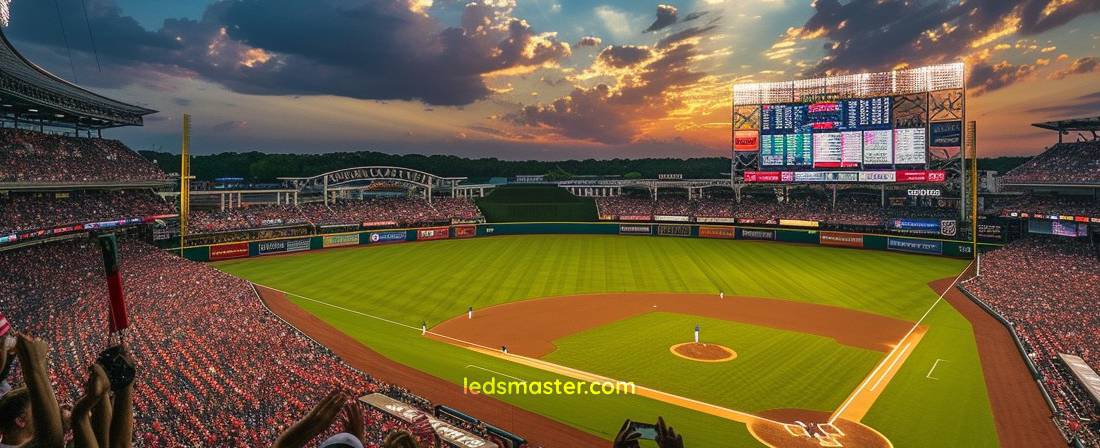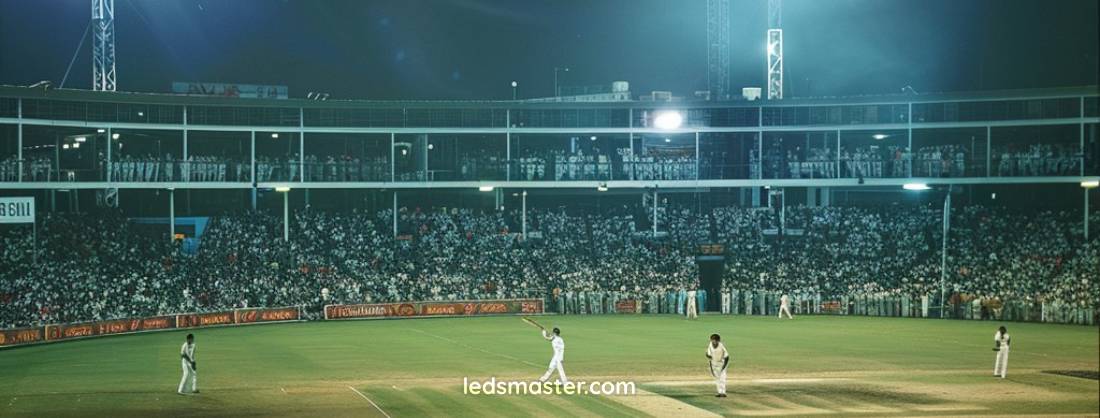Introducing our cutting-edge Baseball Field Lighting System, engineered to enhance every game with superior performance and efficiency. Designed for recreational leagues and professional tournaments alike, our innovative technology ensures exceptional visibility and player comfort, setting a new standard in sports lighting excellence.
Elevate your game with our premium Baseball Field Lighting System. Engineered for precision and reliability, our state-of-the-art solutions provide unparalleled illumination, creating an optimal environment for players and fans alike. Whether for local parks or major stadiums, trust our expertise to light up the diamond with clarity and brilliance.
Get your complimentary lighting design today
Baseball, often hailed as America’s favorite pastime, is a sport that thrives under optimal lighting conditions. From local community fields to major league stadiums, the quality of lighting not only affects gameplay but also enhances spectator experience and safety. Choosing the right baseball field lighting system involves considerations of technology, efficiency, and compliance with standards. This article explores the key factors prospective buyers should consider when selecting lighting solutions, technological advancements in the field, installation and maintenance costs, and concludes with insights into the future of baseball field lighting.
Baseball’s enduring popularity stems not only from its rich traditions but also from its ability to captivate audiences of all ages. Whether under the lights of a local diamond or within the grandeur of a professional arena, the ambiance created by well-designed baseball field lighting enhances the drama and excitement of every pitch, swing, and catch. Beyond mere visibility, modern lighting systems are integral to creating an immersive experience for fans, ensuring players perform at their best, and meeting stringent safety standards. This article delves into the nuances of selecting the ideal lighting setup, explores cutting-edge technological innovations, analyzes cost considerations, and offers a glimpse into the future of how lighting will continue to shape the game of baseball.

Table of Contents
ToggleBaseball field lighting design is influenced by several factors that collectively ensure optimal visibility and performance:
The dimensions and layout of a baseball field dictate the placement and intensity of lighting fixtures. Key areas such as the infield, outfield, and spectator zones require different lighting levels to ensure uniform illumination and visibility. Designers must consider the angles and distribution of light to minimize shadows and glare, which can affect gameplay and spectator enjoyment.
Compliance with local regulations and safety standards is critical in lighting design for baseball fields. Organizations like the American National Standards Institute (ANSI) and the Illuminating Engineering Society (IES) provide guidelines on light levels, glare control, and spillage to ensure player safety and fair play. Meeting these standards not only enhances safety but also avoids potential legal liabilities for field owners and operators.
Modern lighting solutions prioritize energy efficiency and sustainability. LED (Light Emitting Diode) technology, in particular, has become the industry standard due to its superior energy efficiency and longer lifespan compared to traditional lighting sources like metal halide. LED lights not only reduce operational costs but also contribute to environmental initiatives by lowering carbon footprints through reduced energy consumption and maintenance requirements.
LED lighting has revolutionized sports field illumination with its superior performance and efficiency. These fixtures offer high-quality light output, uniform distribution, and excellent color rendering, crucial for accurately tracking fast-moving baseballs and ensuring player visibility. LED lights also provide instant illumination without warm-up times, allowing for flexible scheduling and reduced energy wastage during non-game hours.
Advanced control systems enhance the flexibility and efficiency of baseball field lighting. Smart controls allow operators to adjust light levels, create custom lighting presets for different events, and remotely monitor system performance. Automated scheduling features optimize energy usage by aligning lighting operations with game schedules and facility usage patterns, further reducing operational costs and environmental impact.
Some lighting systems incorporate adaptive technologies that respond to real-time environmental conditions. Sensors can adjust light output based on ambient light levels or weather conditions, ensuring consistent visibility and minimizing energy consumption. These adaptive features not only improve user experience but also demonstrate a commitment to sustainability and efficient resource management.

The installation and maintenance of baseball field lighting systems involve several cost considerations:
The initial cost includes purchasing lighting fixtures, poles, electrical infrastructure, and installation labor. LED lighting systems generally have higher upfront costs than traditional lighting technologies but offer substantial long-term savings through reduced energy consumption and maintenance.
LED lighting systems require minimal maintenance compared to older technologies like metal halide. Routine tasks include periodic inspections, cleaning of fixtures, and occasional replacement of components. However, the frequency and complexity of maintenance are significantly lower with LED lights, resulting in lower operational costs over the system’s lifespan.
Despite higher initial costs, LED lighting systems offer a favorable return on investment due to their energy efficiency and extended lifespan. Savings from reduced energy bills and maintenance expenses can offset the initial investment within a few years, making LED technology a cost-effective long-term solution for baseball field lighting.
Choosing the right lighting system for a baseball field involves balancing technical specifications, regulatory compliance, and budget considerations. LED technology has emerged as the preferred choice for its superior performance, energy efficiency, and sustainability benefits. Advanced control features and adaptive lighting solutions further enhance the functionality and flexibility of modern lighting systems, catering to the diverse needs of sports facilities and enhancing the overall game experience for players and spectators alike.
Selecting the right baseball field lighting system involves thoughtful consideration of technological advancements, regulatory requirements, and financial implications. By prioritizing quality illumination, energy efficiency, and sustainability, stakeholders can create a safe and engaging environment that enhances the enjoyment of baseball for generations to come.